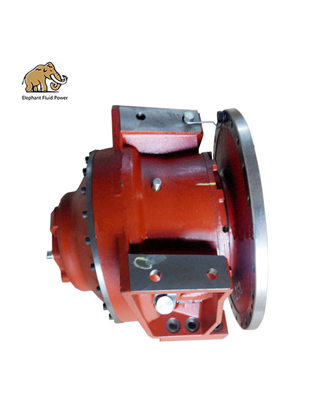The directional control valve is mainly used to open and close the oil circuit or switch the direction of the oil flow to meet the requirements for the start, stop and movement direction of the actuator. According to its use, it can be divided into two categories: one-way valve and directional control valve.
Ⅰ. The characteristics of the directional control valve
1. In petroleum, chemical, mining and metallurgy industries, directional control valve is an important fluid reversing equipment. The valve is installed in the pipeline that delivers lubricating oil in the thin oil lubrication system. By changing the relative position of the sealing component in the valve body, each channel of the valve body is connected or disconnected, so as to control the reversal and start and stop of the fluid.
2. In the powder conveying industry and the environment of the pneumatic conveying system, the directional control valve is an important powder reversing equipment. It is installed in the conveying pipeline and adjusts the shaft baffle by pneumatic control to change the direction of the material in the channel.
3. The directional control valve has accurate action, high degree of automation, stable and reliable work, but needs to be equipped with a driving and cooling system, and the structure is more complicated; the valve disc structure is relatively simple, and is mostly used in production processes with small flow. As one of the most leading hydraulic directional valve manufacturers, we can provide you quality direcrional control valve.
Ⅱ. The role of the directional control valve
The function of the directional control valve is to use the movement of the spool position to change the on and off state of each oil port on the valve body, thereby controlling the connection, disconnection and direction change of the oil circuit. The directional control valve is a valve that uses the change of the relative position of the valve core and the liquid to change the communication relationship between the valve ports, thereby opening and closing the liquid passage, controlling the flow direction of the liquid, and controlling the start, stop and movement direction of the actuator. Working reliability refers to whether the electromagnet can reliably change direction after power-on, and whether it can be reset reliably after power-off. Solenoid valves can only work normally within a certain flow and pressure range. The limit of this operating range is called the commutation limit. The products Elephant Fluid Power provides can realize such roles.
Internal leakage: Under different working positions and specified working pressures, the leakage from the high pressure chamber to the low pressure chamber is internal leakage. Excessive internal leakage can not only reduce the efficiency of the system and cause overheating, it can also affect the proper operation of the actuator.
The commutation frequency is the number of commutations allowed by the valve per unit time. At present, the commutation frequency of single solenoid solenoid valve is generally 60 times/min. Service life, the service life of the solenoid valve mainly depends on the electromagnet. Wet electromagnets have a longer lifespan than dry electromagnets, and DC electromagnets have a longer lifespan than AC electromagnets.
 French
French
 Portuguese
Portuguese
 Russian
Russian
 German
German
 Spanish
Spanish
 Japanese
Japanese
 Korean
Korean
 Irish
Irish
 Greek
Greek
 Turkish
Turkish
 Italian
Italian
 Danish
Danish
 Romanian
Romanian
 Indonesian
Indonesian
 Czech
Czech
 Afrikaans
Afrikaans
 Swedish
Swedish
 Polish
Polish
 Basque
Basque
 Catalan
Catalan
 Esperanto
Esperanto
 Hindi
Hindi
 Lao
Lao
 Albanian
Albanian
 Amharic
Amharic
 Armenian
Armenian
 Azerbaijani
Azerbaijani
 Belarusian
Belarusian
 Bengali
Bengali
 Bosnian
Bosnian
 Bulgarian
Bulgarian
 Cebuano
Cebuano
 Chichewa
Chichewa
 Corsican
Corsican
 Croatian
Croatian
 Dutch
Dutch
 Estonian
Estonian
 Filipino
Filipino
 Finnish
Finnish
 Frisian
Frisian
 Galician
Galician
 Georgian
Georgian
 Gujarati
Gujarati
 Haitian
Haitian
 Hausa
Hausa
 Hawaiian
Hawaiian
 Hebrew
Hebrew
 Hmong
Hmong
 Hungarian
Hungarian
 Icelandic
Icelandic
 Igbo
Igbo
 Javanese
Javanese
 Kannada
Kannada
 Kazakh
Kazakh
 Khmer
Khmer
 Kurdish
Kurdish
 Kyrgyz
Kyrgyz
 Latin
Latin
 Latvian
Latvian
 Lithuanian
Lithuanian
 Luxembourg
Luxembourg
 Macedoniar
Macedoniar
 Malagasy
Malagasy
 Malay
Malay
 Malayalam
Malayalam
 Maltese
Maltese
 Maori
Maori
 Marathi
Marathi
 Mongolian
Mongolian
 Burmese
Burmese
 Nepali
Nepali
 Norwegian
Norwegian
 Pashto
Pashto
 Persian
Persian
 Punjabi
Punjabi
 Serbian
Serbian
 Sesotho
Sesotho
 Sinhala
Sinhala
 Slovak
Slovak
 Slovenian
Slovenian
 Somali
Somali
 Samoan
Samoan
 Scots Gaelic
Scots Gaelic
 Shona
Shona
 Sindhi
Sindhi
 Sundanese
Sundanese
 Swahili
Swahili
 Tajik
Tajik
 Tamil
Tamil
 Telugu
Telugu
 Thai
Thai
 Ukrainian
Ukrainian
 Urdu
Urdu
 Uzbek
Uzbek
 Vietnamese
Vietnamese
 Welsh
Welsh
 Xhosa
Xhosa
 Yiddish
Yiddish
 Yoruba
Yoruba
 Zulu
Zulu







